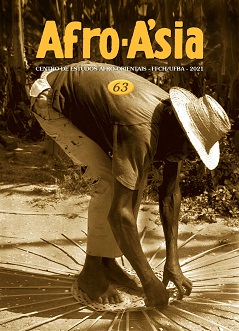“Com duas gejas em cada uma das fontes”
escarificações e o processo de tradução visual da diáspora jeje em Minas Gerais durante o século XVIII
DOI:
https://doi.org/10.9771/aa.v0i63.38662Palavras-chave:
Nação jeje, Diáspora africana , Gejas, EscarificaçõesResumo
Este artigo analisa os impactos da presença dos grupos de línguas gbe na formação do léxico empregado no detalhamento das cicatrizes rituais da população africana presente no distrito diamantino da capitania de Minas Gerais em meados do século XVIII. O enfoque é dado sobre o processo histórico de difusão do termo “geja”, explorando tanto os seus significados ligados a padrões específicos de escarificações como o seu uso generalizado para marcas corporais africanas, independentemente da origem étnica. Examina-se a sua emergência como índice de uma cadeia mais ampla de significados atrelados à etnogênese jeje em um contexto de grande concentração urbana de povos da Costa da Mina.
Downloads
Downloads
Publicado
Como Citar
Edição
Seção
Licença
Copyright (c) 2021 Adair Rodrigues

Este trabalho está licenciado sob uma licença Creative Commons Attribution 4.0 International License.
Você pode compartilhar, adaptar e utilizar livremente este trabalho para qualquer finalidade legítima, desde que mencione explicitamente a autoria e a publicação inicial nesta revista.




